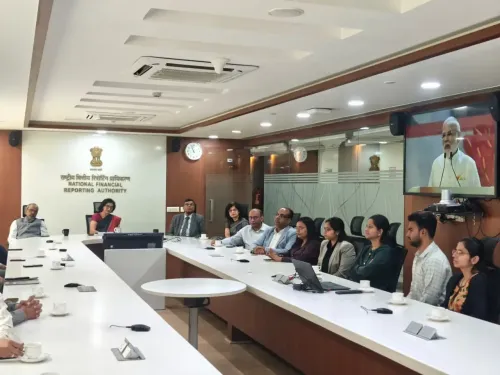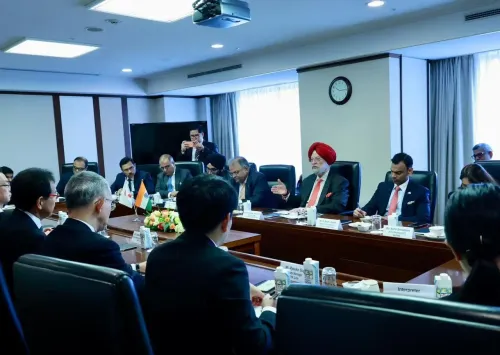Why Did the RBI MPC Keep Home Loan EMI and Interest Rates Steady?

Synopsis
Key Takeaways
- The RBI has kept the repo rate stable at 5.50 percent.
- This decision ensures that EMI and interest on home loans remain unchanged.
- Major banks offer home loan rates starting at 7.3 to 8 percent.
- Industry experts support the RBI’s cautious approach as beneficial for homebuyers.
- The stability in rates may encourage growth in the real estate sector.
New Delhi, Aug 6 (NationPress) The Monetary Policy Committee of the Reserve Bank of India (RBI-MPC) has chosen to maintain the repo rate at 5.50 percent following its bi-monthly meeting on Wednesday.
This decision means that the Equated Monthly Instalment (EMI) and interest obligations on home loans will remain stable.
During the previous meeting, the MPC had reduced the repo rate by 50 basis points, lowering it from 6 percent to 5.50 percent.
In total, the RBI has decreased the repo rate by 100 BPS from February to June this year, leading major banks to offer home loan rates as low as 7.3 percent.
Presently, home loan rates from leading lenders such as the State Bank of India (SBI), Canara Bank, HDFC Bank, Bank of Baroda, and ICICI Bank range from 7.3 to 8 percent.
Prashant Sharma, President of NAREDCO Maharashtra, stated, “The RBI’s choice to keep the repo rate at 5.5 percent despite easing inflation demonstrates a cautious yet balanced approach to addressing global challenges and domestic stability. For the real estate sector, maintaining the status quo on rates ensures ongoing momentum in homebuyer sentiment and sustains housing affordability.”
Shishir Baijal, Chairman and Managing Director of Knight Frank India, remarked that this decision would maintain affordability for homebuyers.
“The stability of policy rates and ample liquidity conditions is crucial for the real estate sector, enhancing predictability and preserving affordability for buyers. Some banks have already reduced home loan rates for consumers, aiding housing demand especially in the mid- and low-income segments, with more adjustments expected,” Baijal noted.
Amit Goyal, MD of India Sotheby’s International Realty, commented, “The RBI’s neutral policy stance, combined with a GDP growth outlook of 6.5 percent and a softer inflation trend, indicates robust macroeconomic confidence. Strong consumption and stable urban demand are currently bolstering India's housing sentiment.”
Rajeev Radhakrishnan, CFA, CIO of Fixed Income at SBI Mutual Fund, believes the RBI's decision aligns with expectations given the current geopolitical climate.
“Following the frontloading of policy actions in June, it was anticipated that the RBI would not change the policy rate or guidance in the August review. In a volatile external environment characterized by trade and tariff disruptions – which are likely to keep external demand weak – the responsibility for sustaining growth largely falls on domestic policy strategies and the evolution of domestic demand drivers,” Radhakrishnan explained.









